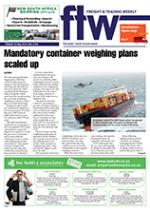Credit insurer Coface has
named its predicted top
ten emerging countries
in terms of development,
production prospects and
sufficient financing to support
expansion in the next five to
ten years – and they’re not the
usual suspects.
The company believes Cipps
(Colombia, Indonesia, Peru,
Philippines and Sri Lanka)
and KTZBE (Kenya, Tanzania,
Zambia, Bangladesh and
Ethiopia) are the countries to
watch against a background
of waning support for the likes
of the Brics (Brazil, Russia,
India, China and South
Africa) and Mints (Mexico,
Indonesia, Nigeria, Turkey and
South Africa) economies.
Cipps is seen as strong
from an investment and
infrastructure perspective as
well as showing good growth,
political stability and resilience
to global shocks. KTZBE has
also shown
good growth
and resilience
to global
shocks but
while the
nations will
provide good
investment
returns,
currently
they still pose
high risks,
according to
Coface lead
analyst Saijil
Singh.
“We expect
to see a
significant improvement in
five to ten years, but at the
moment the KTZBE nations
have a lack of good trade
agreements – which favour
their export partners, have
poor infrastructure and poorer
economic and education
policies than their Cipps
counterparts,” said Singh.
Brics was hailed in the
first ten years of the 2000s as
driving the economic power
shift from traditional global
markets to emerging markets.
“But the risks with Brics
are that while
the nations
experienced
unprecedented
growth
between 2008
and 2010, there
has been an
ongoing slight
downward
slope in
growth which
is expected to
continue to
marginally
decrease up
to 2018,” he
noted. For
2014, Coface
forecasts growth of on average
3.2 points lower than the
average growth these countries
registered over the previous
decade.
Factors such as the
countries’ world rankings
in ease of doing business
and global competitiveness
as well as political tension
and social unrest have
contributed to a slowdown
in foreign direct investment
as well, said Singh.
Furthermore, an adjustment
in supply means that local
businesses no longer have
sufficient production
capacity to meet continued
strong demand. “Companies
are aware they are not going
to achieve the kind of growth
they need to keep up with
the projected growth of the
global economy,” he said.
Mints economies were
showing slightly more
potential for growth,
although the future
growth projections were
also on a downward slope
and the same inherent
risks as the Brics nations
applied, commented Singh.
“Furthermore, global
investors do not have the
same experience dealing with
these countries so they will
still choose to invest in Brics
rather than Mints,” he said.
INSERT & CAPTION
For 2013 Coface
forecasts growth
of on average 3.2
points lower than the
average growth Brics
countries registered
over the previous
decade.
– Saijil Singh
CAPTION
Zambia, with the capital city of
Lusaka pictured here, offers
the lowest risk of the KTZBE
economies, and has good
infrastructure, says Coface.

